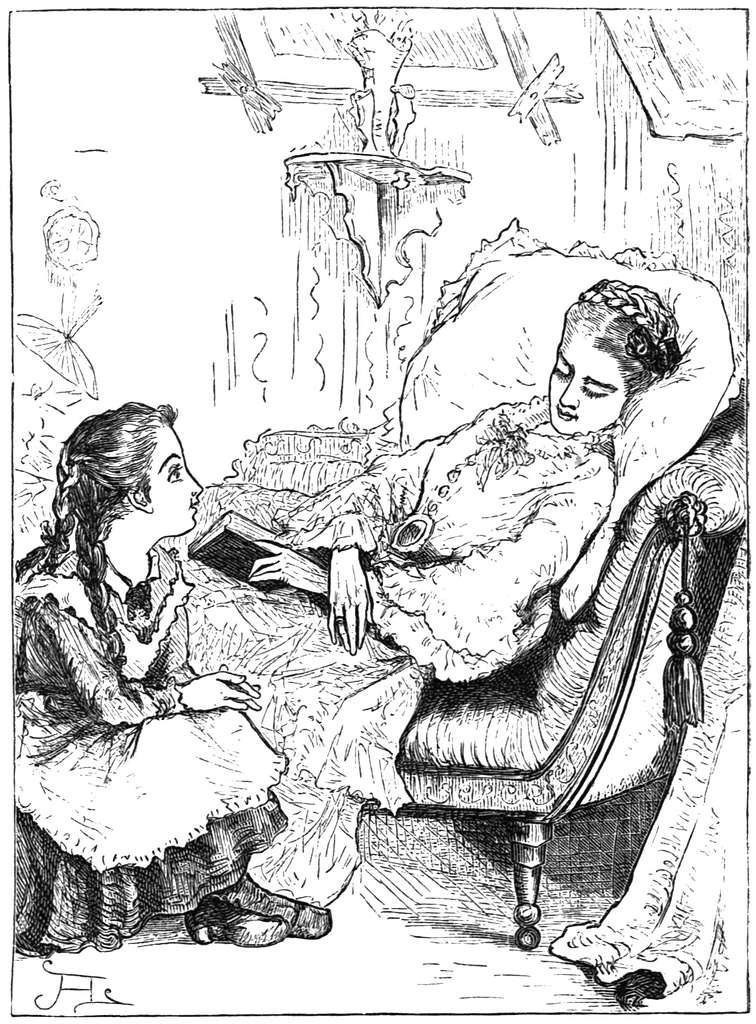
What Katy Did is a charming and surprisingly insightful children’s novel from 1872, full of old-fashioned turns of phrase, big families, and sunny adventures gone awry. It tells the story of Katy Carr, a spirited twelve-year-old who lives with her widowed father and five younger siblings. She’s impulsive, imaginative, and always dreaming of doing something grand—someday. When a tragic accident on a swing leaves her bedridden, Katy’s world is turned upside down, to say the least. What follows isn’t just a story about recovery: it’s a powerful transformation, as Katy learns to see her daily life, her family, and her own heart (and interior world) differently.
I hadn’t thought much about the book in years until it came up during a recent office hours conversation. A student and I were talking about the books that meant the most to us, and without skipping a beat—and smiling broadly—she mentioned What Katy Did. She had read it in fourth grade, she told me, her words tumbling out in excitement, and she still thinks about it to this day. When I reached behind me and pulled the earmarked copy from the shelf, she lit up in surprise. That conversation stayed with me. And since I have children in third and fifth grade, I knew exactly what our next family read-aloud would be.
One moment that struck me came early in the book, upon rereading it with my family. Katy keeps putting off playing with her little sister, Elsie, over and over again. She means to do it—she really does—and Elsie is always following her around, eager for attention. But there’s always something else to tend to in Katy’s rapid-fire mind: some other adventure! Some other time! Some other, well, any “some other” besides playing with her annoying little sister. Yet if you asked Katy, she’d say she loved Elsie deeply and saw herself as a model big sister. She even tells her cousin Helen, who is visiting her home, as much.
After Katy’s accident, she gradually begins to live that love differently. Slowly, she starts aligning her actions with her intentions. As my children and I read it together, I found myself asking: how often do I do the same as Katy did when she was well—and what does her transformation have to teach me? How often do we all put off making a call, checking in, offering our presence to our friends and family? How often do we save our love for a time when things feel calmer or more convenient?
For a children’s book, it asked me some very adult questions—questions that, quite frankly, made me feel a little uncomfortable. But they also helped me understand why that student loved the book so much. And they made me want to be a better human being. That’s the mark of a lasting book, children’s fiction or not.
There’s one line from the story I underlined as we read, one I knew I wanted to share here with readers. It describes Katy in the early days of her recovery, still struggling to accept the new way she was interacting with and viewing the world:
“She was like a person who has been asleep and is called and can't at once open her eyes.”
She’s trying to become a new person; she just can’t change all at once. And that slow awakening, that gradual shift from bitterness to tenderness, felt deeply familiar to me. I’ve struggled with depression twice in my life—once after my parents passed away, and once again during the COVID-19 pandemic. I remember how hard it was, in those seasons, to think of anyone else, even when I truly wanted to. And even outside those depths, in the busyness of working motherhood, juggling what feels like a million tasks, I can sometimes blind myself to what matters most. I get caught up in daily lists, checking off to-dos, and forget warm hugs and check-ins with friends—or even with myself.
In what Coolidge terms the “School fo Pain,” Katy ultimately learns to live and see the world with new eyes. She begins to notice the people around her, to soften, to offer warmth instead of impatience. She becomes someone who invites others in—even when she is ill—who makes her space welcoming, who chooses love not someday, but now. Even during a time when it seems most inconvenient (when she is paralyzed and in pain), and in a place where it seems least likely (a bed she is stuck in, in a room she cannot leave).
When Elsie visits her in her sickroom, Katy doesn’t complain about being in pain, instead Katy asks her sister questions about herself. That moment is perhaps one of the most moving in the text. Even writing about it now gives me goosebumps.
As I reflected on Katy’s change, I thought of these words from Scripture, too:
“We rejoice in our sufferings, knowing that suffering produces endurance, and endurance produces character, and character produces hope, and hope does not disappoint us.”
—Romans 5:3–5
There’s something remarkable about stories that hold up a mirror to your life—and make you aspire to be holier at the same time. Plus it’s even better when those stories come wrapped in ribboned bonnets and 19th-century charm, at least in the mind of this writer.
Even old tales for children can stir something new in us.
I wonder now: What story has surprised and stirred something new in you recently?
In hope and holy curiosity,
LuElla



